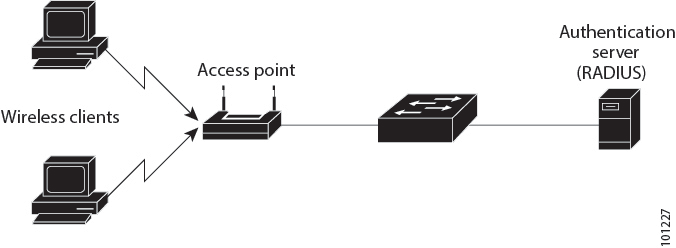Information About Data Datagram Transport Layer Security
Data Datagram Transport Layer Security (DTLS) enables you to encrypt CAPWAP data packets that are sent between an access point and the controller using DTLS, which is a standards-track IETF protocol that can encrypt both control and data packets based on TLS. CAPWAP control packets are management packets that are exchanged between a controller and an access point while CAPWAP data packets encapsulate forwarded wireless frames. CAPWAP control and data packets are sent over separate UDP ports: 5246 (control) and 5247 (data).
If an access point does not support DTLS data encryption, DTLS is enabled only for the control plane, and a DTLS session for the data plane is not established.
If an access point supports Data DTLS, it enables data DTLS after receiving the new configuration from the controller . The access point performs a DTLS handshake on port 5247 and after successfully establishing the DTLS session. All the data traffic (from the access point to the controller and the controller to the access point) is encrypted.
 Note |
The throughput is affected for some APs that have data encryption enabled. |
The controller does not perform a DTLS handshake immediately after processing client-hello with a cookie, if the following incorrect settings are configured:
-
ECDHE-ECDSA cipher in “ap dtls-cipher <>” and RSA-based certificate in “wireless management trustpoint”.
-
RSA cipher in “ap dtls-cipher <>” and EC-based certificate in “wireless management trustpoint”.
 Note |
This is applicable when you move from CC -> FIPS -> non-FIPS mode. |
 Note |
If the AP’s DHCP lease time is less and the DHCP pool is small, access point join failure or failure in establishing the Data Datagram Transport Layer Security (DTLS) session may occur. In such scenarios, associate the AP with a named site-tag and increase the DHCP lease time for at least 8 days. |

 Feedback
Feedback